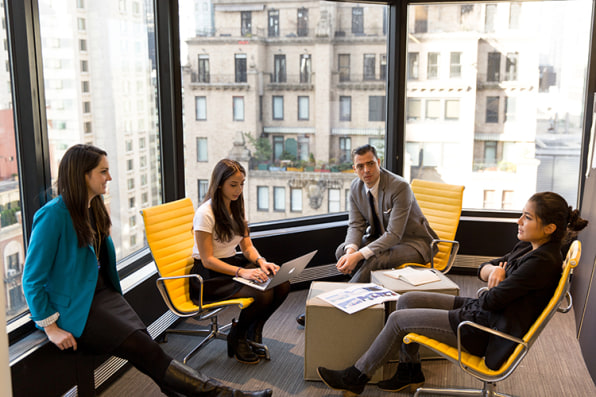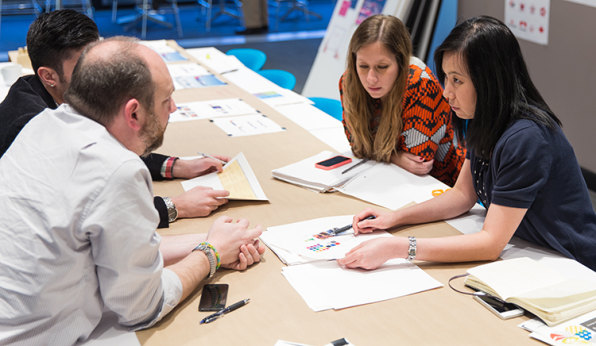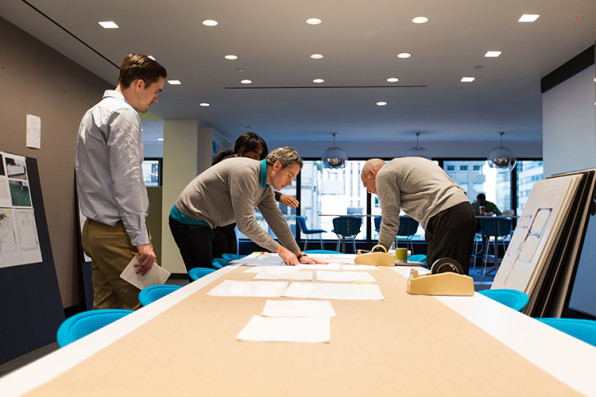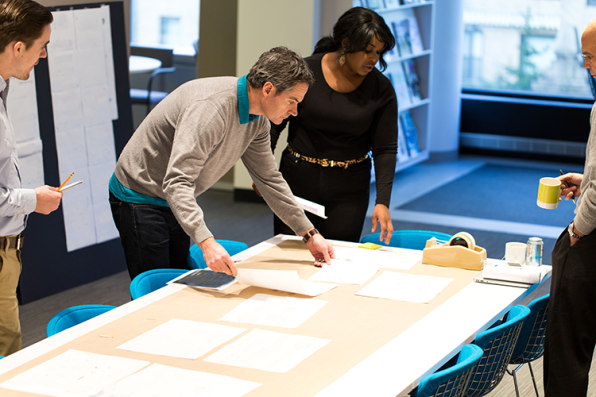How Is Design Thinking Used in Communications
I lead an unusual company. Lippincott, part of the highly analytical management consulting firm Oliver Wyman, is the creative force behind the ubiquitous red-and-white Coca-Cola swirl, Samsung's global identity, the Starbucks logo, Walmart's rebranding, and the Infiniti concept, name and brand.
We have experts in stochastic modeling and strategic choice analysis sharing workspaces with graphic designers, linguists, and architects. Each of our disciplines has its own perplexing vernacular, industry associations, dress codes, and even workday start times. Yet, somehow this unique blend of skills has managed to sustain itself in this way for 70 years now.

Lippincott thrives in pairing the rational and the creative, using a process that is often referred to as design thinking. This is a place where more and more CEOs want their organizations to be. Spurred by the success of companies like Apple, and fearful they'll get left behind in the competitive race if they don't master this skill, companies are investing in bringing the creative into operationally oriented organizations, sending executives for training at places like the Stanford d.school, and creating environments designed to foster right and left brain integration.
Design thinking, however, is a slightly murky concept that means different things to different people. At heart, though, it is about fusing the creative and open-ended with the analytical and operational, combining very different ways of thinking and acting. This is, of course, easier in theory than in practice. How do you get children's book authors and chemical engineers to click into something greater than the sum of the parts–rather than devolve into warring camps? Here are some of the lessons I've learned along the way as CEO and rules we all try to adhere to at Lippincott.
Everyone's a Bit of Everything

Success starts not with bringing the suits and creatives together but with making sure you hire suits who are a little bit creative and designers who are energized by business issues. We like our employees to have a shared outlook on creativity in the workplace and to bring outside passions–like fashion, photography, and writing–into the work environment in order to create a shared love for the experiential and emotive.
Barrier-Free Collaboration
Some firms with diverse talent use project management or account management to pull the pieces together. For example, most ad agencies have an intermediary who manages the work, brokering the roles of the marketing, creative, and strategy teams. Not Lippincott. We have found that this can be more of a separator than a connector, even a barrier to collaboration. For us, there are two broad skill sets–strategy and design–with no buffer in between to organize them and tell them how to work together. They have to figure it out on their own.
All Things Equal

All of our career progression opportunities are the same across disciplines, and during career reviews, all of our strategists and designers are evaluated against a common set of criteria. We also have the exact same internal salary levels across these positions (even though external salaries for MBAs and MFAs are often vastly different). It makes our labor costs a bit higher but we view it as a critical cost of doing business, so that everyone feels truly equal.
Everyone's Invited
While it can make for bigger and even unwieldy meetings, everyone is invited to the table and encouraged to have a voice. And when it comes to client projects we invite a wide group in to discuss and contribute, even at the risk of efficiency and focus. For instance, when working with clients to help envision what the customer experience journey might look like three to five years down the road, we hold an internal "mapping" session. Everyone across all levels and departments is encouraged to think expansively about a particular category and contribute to building out the vision. This becomes a foundation for the people on the team leading the project to explore areas they might not have thought of. You never know who in the room might have the most innovative idea unless you ask.
We're All Business People

All of us are true business professionals–held accountable for budget management, project pricing, and client management. Regardless of our backgrounds, we have solid business acumen and are serious about running a tight ship. We do in-house training on the economic model of our business, financial planning and forecasting, and budgeting. We also share a comprehensive business report each month that gives teams a true look under the of the hood of the business allowing them to best manage their client relationships. In my experience, a lot of organizations take a slightly patronizing view of design and creative types, assuming they can't really be expected to understand and manage things like budgets. We assume the opposite–that everyone can and should be a good businessperson.
Shared Audacity
We have a common and modest focus on "building tomorrow's best brands" as a uniting passion and rallying cry. We emphasize, both to our people and our clients, the power of what we can achieve when we harness all of our skills and coalesce the creative and the strategic in addressing a branding challenge.
Recently, we were asked to help innovate an iconic collectable toy brand. And while the client had the idea of making incremental improvements to the design of the actual product, we brought together a diverse group to rethink the bigger strategy, which led them to focus not just on a product to be cherished and displayed, but in using the product as a springboard to develop a fun, intergenerational learning platform. Bringing together graphic and industrial designers, as well as MBAs and digital strategists, helps us to lead all of our clients in new directions and forces us to not only ask the "why" but the "what if."
Loose Control

Good designers are by nature rule breakers. They like to challenge conventional wisdom. To encourage this mindset and allow freedom of exploration, we try to manage in a way that sets goals and provides broad metrics but that leaves lots of day-to-day leeway to be creative and find new ways to help build the firm.
Be the Calm
One of the biggest challenges of running a firm like Lippincott is the broad range of personality types from extroverted to introverted. These fundamental differences in how people view the world and approach interactions can lead to frequent minor flare-ups and misunderstandings. I view one of my important roles as being the balance in the middle that helps interpret and translate across this divide and smooth out issues (it might help that I score right in the middle on introvert/extrovert tests).
Celebrate the Content
In a lot of business environments the applause is often saved only for tangible business success–big customer wins, a great financial quarter, etc. But in a design thinking culture, most people are motivated by whether they created something beautiful, stretched a boundary, broke a barrier, or learned something new. So we spend a lot of time celebrating the output of our collaboration as much or even more than the business success it ultimately drives.
That's not to say that following these steps results in a sure thing–we've had 70 years to perfect our method, and even with this history we are always on the lookout for new and effective ways to create and conduct our business. Ultimately, this must continue to be an ongoing and collaborative quest.
(Photo at the Top of the Page: Lippincott Package Design Planning Board Meeting, 1949)
How Is Design Thinking Used in Communications
Source: https://www.fastcompany.com/3022209/9-ways-to-get-the-most-out-of-design-thinking
0 Response to "How Is Design Thinking Used in Communications"
Post a Comment